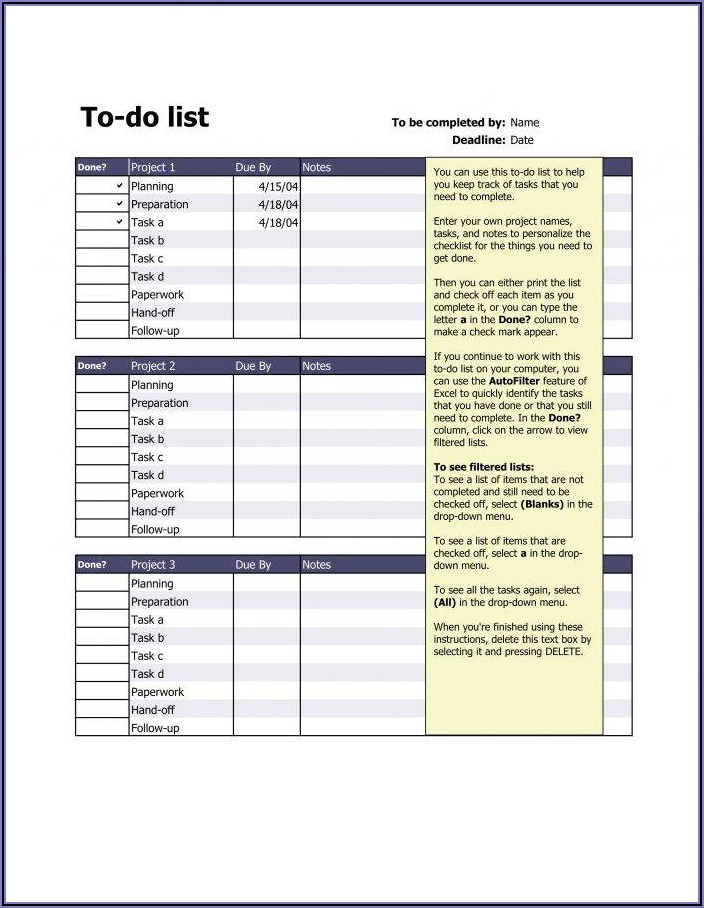
And no waiting for apps to provide updates or bug fixes. If you try the Bullet Journal method and decide it's not for you, you can try something else on the very next page of your notebook. That's perhaps the most important benefit if you're tired of spending too much on new tools in the hope of finding a miracle tool. With a notebook and pen, on the other hand, you can use any of the analog systems mentioned above, switch from one to another, or take pieces of each and cobble them all together into your own system.Īnd with analog methods, you can keep using the same tools in different ways.
#TO DO LIST NOTEBOOK DAILY TASK PLANNER SOFTWARE#
Most software is designed with the ideas and opinions of its makers in mind, so you can't bend it to your will completely (unless you make your own digital tools, of course).

One of the greatest benefits to using pen and paper over digital tools is that you can use them however you want.

Why should you choose an analog productivity system, instead of just searching the App Store for another app? Flexibility Benefits of Notebook SystemsĮach of these systems offer something to help keep you productive, but it's easy to imagine an app offering the same benefits with less work. This system is great if you don't need to categorize your tasks, and want a way to make sure you're always moving tasks forward, even if they're too big (or too boring) to finish in one go. Eventually you'll work on a task enough times that it'll be finished and you won't need to rewrite it. When you don't want to work on it anymore, you cross it off the list and rewrite it at the bottom. Once you decide to work on a task, the Autofocus system only requires you do some work on it. Of course, sometimes you'll have to do important things that aren't fun, but what you want to aim for is a balance of both. The task that draws you to it because you want to work on it and because it's important. Some will be things you're excited to work on, others will jump out because your rational mind knows they're important. Reading over your list of tasks, you'll find one or more jump out at you, nagging at you to work on them. This is why it's called Autofocus: It's designed to provide balance between your rational mind, which knows what you should work on, and your emotions, which tell you what you want to work on. And then you read it a second time, this time looking for tasks that jump out at you. Then, when you're ready to work, you read over the list once, just reading it at first without planning to work on anything. The Autofocus method works like this: You write a list of everything you need to do. You can even use a plain pad of paper rather than a notebook, if you prefer.

Autofocus is based around one list of tasks, so there's no setting up sections of your notebook or updating index pages. If those two systems seem a bit complicated for you, Autofocus might be a better option. AutofocusĪutofocus is one of the simplest task management systems Strikethru is a great system if you like to keep your various task lists separated, and want a dedicated space in your notebook for daily to-do lists and note-taking. For instance, 12.5 would be the fifth task on the 12th page. Simply use the page number and the task number to reference any task in your vault. Since the system is based on the idea of only ever working from your daily task list (called the "live list"), you can migrate tasks to your daily list without rewriting them. Each page in the vault also houses nine tasks, numbered 1-9. One unique feature of the Strikethru system is the vault-the section of your notebook housing themed lists of tasks, like gift ideas or project-related tasks.
#TO DO LIST NOTEBOOK DAILY TASK PLANNER FULL#
Strikethru has a more specific setup for daily pages than the Bullet Journal, allocating a full page per day, and advocating you list a maximum of nine tasks. Instead, it divides your notebook into various sections: one for your daily task lists, one for your themed lists (similar to the Bullet Journal's collections, except these are all actionable tasks), and one for brain dumps and taking notes.

The Strikethru system doesn't use an index-something its creator, Chris Kyle, found too cumbersome to manage. If you like the idea of a sectioned-out notebook that still has some of the flexibility of the Bullet Journal, Strikethru might be a better system for you. Few things are more satisfying than crossing off something on your task list


 0 kommentar(er)
0 kommentar(er)
